Sunderland Preparative Quaker Meeting
Reference: SF/Su Catalogue Title: Sunderland Preparative Quaker Meeting Area: Catalogue Category: Non-Conformist Church Records Description: part 3
Covering Dates: 1774-1968
Catalogue Index
Use  and
and  to reveal/hide the structure of the catalogue index (requires Javascript to be enabled in your internet browser options). Click to jump directly to information at a specific level of the catalogue.
to reveal/hide the structure of the catalogue index (requires Javascript to be enabled in your internet browser options). Click to jump directly to information at a specific level of the catalogue.
- Sunderland Preparative Quaker Meeting
- Yearly Meeting (Ref: SF/Su 112/1-23)
- Durham Quarterly Meeting (Ref: SF/Su 113/)
- Minutes (Ref: SF/Su 113/1/1-2)
- Financial papers (Ref: SF/Su 113/2/1-10)
- Bills and Receipts (Ref: SF/Su 113/3/)
- Building Maintenance (Ref: SF/Su 113/3/1-29)
- Travel to other meetings (Ref: SF/Su 113/3/30-34)
- Payments to the poor (Ref: SF/Su 113/3/35-50)
- Others (Ref: SF/Su 113/3/51-57)
- Letters (Ref: SF/Su 113/4/1-2)
- Miscellaneous (Ref: SF/Su 113/5/1-6)
- Newcastle Monthly Meeting (Ref: SF/Su 114/1-7)
- Sunderland Friends Meeting (Ref: SF/Su 115/)
- General Minutes of Preparatory Meetings (Ref: SF/Su 115/1/1-3)
- Minutes of Meetings of Ministry and Oversight (Ref: SF/Su 115/2/1-2)
- General Accounts (Ref: SF/Su 115/3/)
- Account Books (Ref: SF/Su 115/3/1)
- Cash Books (Ref: SF/Su 115/3/2)
- Bank Account Books (Ref: SF/Su 115/3/3-4)
- Balance Sheets (Ref: SF/Su 115/3/5-11)
- General Organisation (Ref: SF/Su 115/4/)
- Meetings (Ref: SF/Su 115/4/1-10)
- Registration of Place of Worship (Ref: SF/Su 115/4/11-13)
- Appointment of Officeholders (Ref: SF/Su 115/4/14-17)
- Miscellaneous (Ref: SF/Su 115/4/18-20)
- Membership (Ref: SF/Su 115/5/1-21)
- Burials (Ref: SF/Su 115/5/1-16)
- Miscellaneous (Ref: SF/Su 115/5/17-21)
- Property (Ref: SF/Su 115/6/1-85)
- Trustees of Friends' property (Ref: SF/Su 115/6/1-8)
- Property Taxes (Ref: SF/Su 115/6/9-18)
- Sunderland Friends' Meeting House (Ref: SF/Su 115/6/19-54)
- Appointment of Caretakers (Ref: SF/Su 115/6/19-25)
- Building and alteration (accounts) (Ref: SF/Su 115/6/26-30)
- Building (1823-1827) tradesmen's estimates and bills, etc. (Ref: SF/Su 115/6/31-53)
- Miscellaneous (Ref: SF/Su 115/6/54)
- Burial Grounds (Ref: SF/Su 115/6/55-71)
- Burials Act 1852 (Ref: SF/Su 115/6/55-58)
- Reports (Ref: SF/Su 115/6/59-60)
- Plans (Ref: SF/Su 115/6/61)
- Repairs and Improvements (Ref: SF/Su 115/6/63-67)
- Miscellaneous (Ref: SF/Su 115/6/68-71)
- Other Properties (Ref: SF/Su 115/6/72-83)
- Miscellaneous (Ref: SF/Su 115/6/84-85)
- Subscriptions (Ref: SF/Su 115/7/)
- General Subscriptions (Ref: SF/Su 115/7/1-2)
- National Subscriptions (Ref: SF/Su 115/7/3-7)
- Local Subscriptions (Ref: SF/Su 115/7/8-17)
- Sunderland Friends' Tract Association (Ref: SF/Su 115/8/1-8)
- Abel Chapman's Trust (Ref: SF/Su 115/9/1-7)
- Miscellaneous (Ref: SF/Su 115/10/1-4)
- Education (Ref: SF/Su 116/1-3)
- Ayton, Ackworth and Wigton Schools (Ref: SF/Su 116/1/1-9)
- Sunderland Schools and Pupils (Ref: SF/Su 116/2/)
- Reports (Ref: SF/Su 116/2/1-8)
- Accounts (Ref: SF/Su 116/2/9-11)
- Tuition Fees (Ref: SF/Su 116/2/12-27)
- Payments to Staff (Ref: SF/Su 116/2/28-33)
- General Expenses (Ref: SF/Su 116/2/34-42)
- Miscellaneous (Ref: SF/Su 116/2/43-49)
- Shotton School (Ref: SF/Su 116/3/)
- Reports (Ref: SF/Su 116/3/1-2)
- Accounts (Ref: SF/Su 116/3/3-4)
- Tuition Fees (Ref: SF/Su 116/3/5-32)
- Payments to H. Fenwick (Ref: SF/Su 116/3/33-41)
- General Expenses (Ref: SF/Su 116/3/42-45)
- Miscellaneous (Ref: SF/Su 116/3/46-48)
- National Meetings and Committees (Ref: SF/Su 117/1-9)
- Miscellaneous (Ref: SF/Su 118/1-4)
Catalogue Description
Records of the Sunderland Preparative Meeting of the Society of FriendsINTRODUCTION
The documents in this group of papers have been arranged in such a manner as reflects the hierarchical organisational structure of the Society of Friends. The Yearly Meeting (held exclusively in London until 1904) is the highest constitutional authority of the Society of Friends in Great Britain. These meetings which are now open to all members, were until 1861 attended only by representatives appointed by Quarterly Meetings, Ministers and members of the Meeting for Sufferings. At the Yearly Meeting, general procedural rules and advice on spiritual and moral matters were formulated, to be passed down to the Quarterly Meetings.
The Quarterly Meetings, now called General Meetings, are the next step down in the hierarchical ladder. Initially, in England, there was roughly a Quarterly Meeting for each county but over the years many of the meetings merged. The main function of the Quarterly Meeting was to provide a channel of communication between the Yearly Meetings and the Monthly Meetings and to ensure that the advice of the Yearly Meetings was taken up by the members in general. Quarterly Meetings were attended by representatives appointed by the Monthly Meetings. Since the end of the nineteenth century Quarterly Meetings have declined in administrative importance. In the 1960s, Quarterly Meetings became known as General Meetings; by this time they had primarily become meetings of religious devotion.
The Monthly Meetings were, and still remain, the main administrative meetings affecting church affairs. The Monthly Meetings were made up of representatives from the Preparative Meetings. A Monthly Meeting usually had authority over three or four Preparative Meetings. The Monthly Meetings were in effect in charge of the administration of church property and charitable endowments. This was the meeting where most of the practical decisions affecting ordinary members were carried out. It also had responsibility for the registration of births, marriages, burials and removals of members within the Monthly Meeting area.
It is fairly important to note however that in many areas there were also Monthly Meetings for worship, in which business was not discussed. These were always held in addition to the Monthly Meetings for business rather than in the place of them and could be attended by any member.
Preparative Meetings, originally known as Particular Meetings are local meetings of members. They primarily met to discuss business to be referred to Monthly Meetings or to answer 'queries' referred to them from the Monthly Meeting. Preparative Meetings also usually had responsibility for the day-to-day running of the local meeting houses. In addition, Friends would usually meet at local meetings for worship, on Sundays and sometime also on weekdays.
Another important point to be remembered about the organisation of the Society of Friends is that men and women had separate meetings for business with separate hierarchical structures until the late 19th century. Women's administrative meetings did not merge fully with the men's meetings until 1897, and until then, women were not able to attend the Yearly Meetings. In some areas, women and men did meet on a joint basis for some Preparative Meetings and, from the 1870s onward, it became more common for Monthly Meetings to be held jointly.
Catalogue Contents
See also SF/Su 114/2
Ref: SF/Su 113/1/1See also: SF/Su 115/6/26-30
Ref: SF/Su 115/3/1See also: SF/Su 115/7/1-2
Ref: SF/Su 115/3/5(for removals see SF/Su 114/6-7)
Burials (Ref: SF/Su 115/5/1-16)(see also: SF/Su 115/6/55-71)
Ref: SF/Su 115/5/1(for subscriptions see SF/Su 115/7
Ref: SF/Su 115/6/26See also SF/Su 115/7/3
Ref: SF/Su 115/6/31(See SF/Su 115/5/1-16 for Burials notes etc.)
Burials Act 1852 (Ref: SF/Su 115/6/55-58)Ref: SF/Su 115/6/55(See also SF/Su 115/1/2, 115/6/2)
Ref: SF/Su 115/6/59(including former school premises)
Ref: SF/Su 115/6/72(For subscriptions see: SF/Su 115/7)
Ref: SF/Su 115/8/1The Society of Friends in Sunderland and Shotton benefitted from two major educational endowments: Edward Walton's endowment and Robert Forster's endowment. Edward Walton's endowment was set up in 1768; the proceeds of the fund, although officially administered by Durham Quarterly Meeting, were split between Durham, Newcastle and Raby Monthly Meetings. The money paid to Newcastle Meeting was to be used for the establishment of a school in Sunderland, employment of a school master or school masters, and for the education of 12 poor children. Any residue was to be used for buying school books and binding boys and girls into apprenticeships. The money paid to Durham Monthly Meeting was to be used to provide education for 12 children in Shotton, any residue was also to be used for buying school books and binding boys and girls into apprenticeships. In addition Walton bequeathed a cottage in Shotton to be used as a school house. The money paid to Raby Monthly Meeting was to be used towards the education of 12 poor children in Shildon and an equal number in Bishop Auckland and the provision of schools in both places.
In 1784, the Durham Monthly Meeting was dissolved and the Durham and Benfieldside Preparative Meetings came under the jurisdiction of Newcastle Monthly Meeting. The Raby Monthly Meeting subsequently came to be held at Darlington and the Darlington Monthly Meeting took over responsibility for the Shildon and Bishop Auckland Schools. Over the years, the capital sum of the endowment grew larger, allowing increased expenditure on the education of children in the four towns.
The Society of Friends' School in Sunderland was to come under the auspices of the British and Foreign Society and was not limited to Quaker children. It was to occupy sites at Garden Street, Nicholson Street and, from 1858 onwards, Norfolk Street, Bishopwearmouth. In 1893, the school roll had fallen due to the introduction of free board schools. The school itself ceased to be maintained by the endowment and was taken over by the school board in late 1893, although it does not appear to have stayed open for very long afterwards. The endowment, however, continued to pay for the books of poor children at this school and for the fees of deserving children at other voluntary schools in the city.
Shotton school closed in 1890 and the school and adjoining buildings were let to the family of H. Fenwick, former school master at the school. The money from Walton's endowment and from the lease of the school house went to meet the cost of school fees and books for those children from Shotton, who had to be educated at Castle Eden and Easington, due to the closure of their local school.
Robert Forster's endowment fund was much smaller than the Edward Walton endowment. It was set up in 1737 to provide the land for, and to maintain, a school house and burial ground in Hawthorne. By 1864 the burial ground was unused and the school lay derelict. It was decided to sell the property and to put the income from the proceeds to more appropriate uses. It was resolved that part of the income was to be used for the education of poor children in Sunderland. By 1900 the terms of the endowment had become more specific and the educational element of the endowment was deemed to be for the payment of fees for pupils at higher grade school in Sunderland.
Society of Friends' members, both locally and nationally, also had an interest in Quaker boarding schools. These were supported by subscription from individual meetings and members. Schools mentioned in this catalogue are Great Ayton Agricultural School in Yorkshire, Ackworth School in Yorkshire and Wigton School in Cumbria.
(For subscriptions see: SF/Su 115/7)
Ref: SF/Su 116/1/1(See also SF/Su 113/4/2)
Reports (Ref: SF/Su 116/3/1-2)(See also SF/Su 116/2/4-5)
Ref: SF/Su 116/3/1(agent for the committee for Shotton School Trust)
Ref: SF/Su 116/3/33

